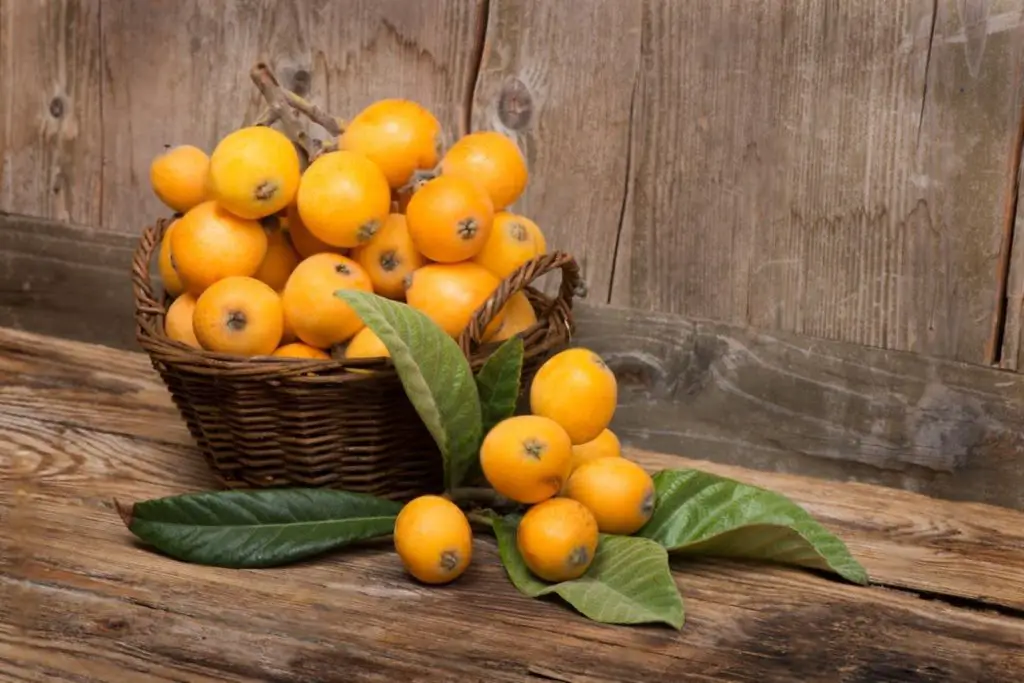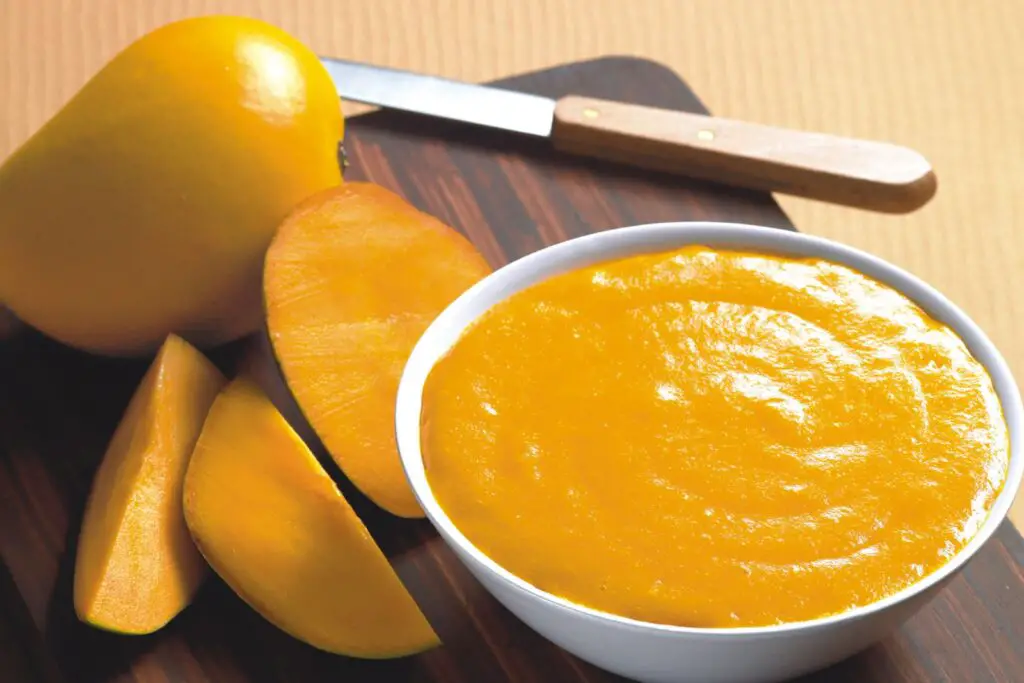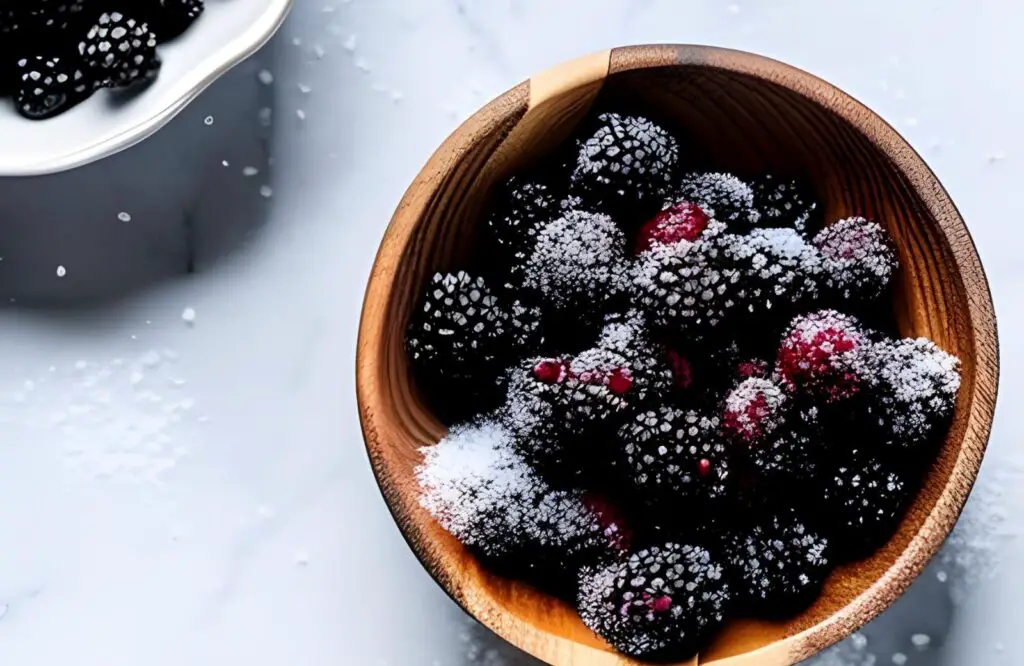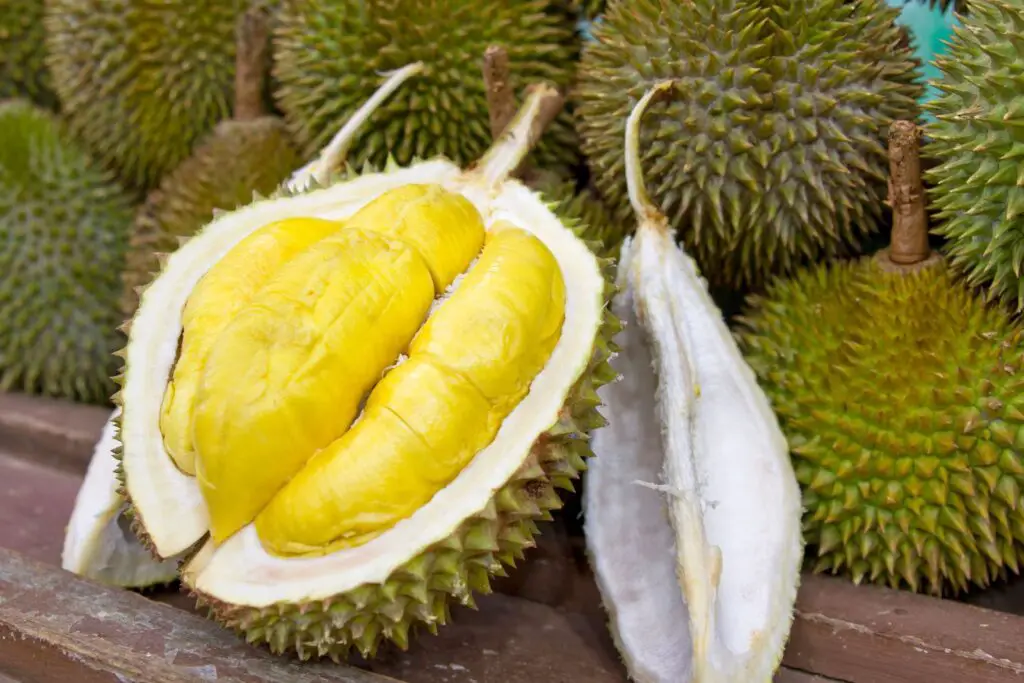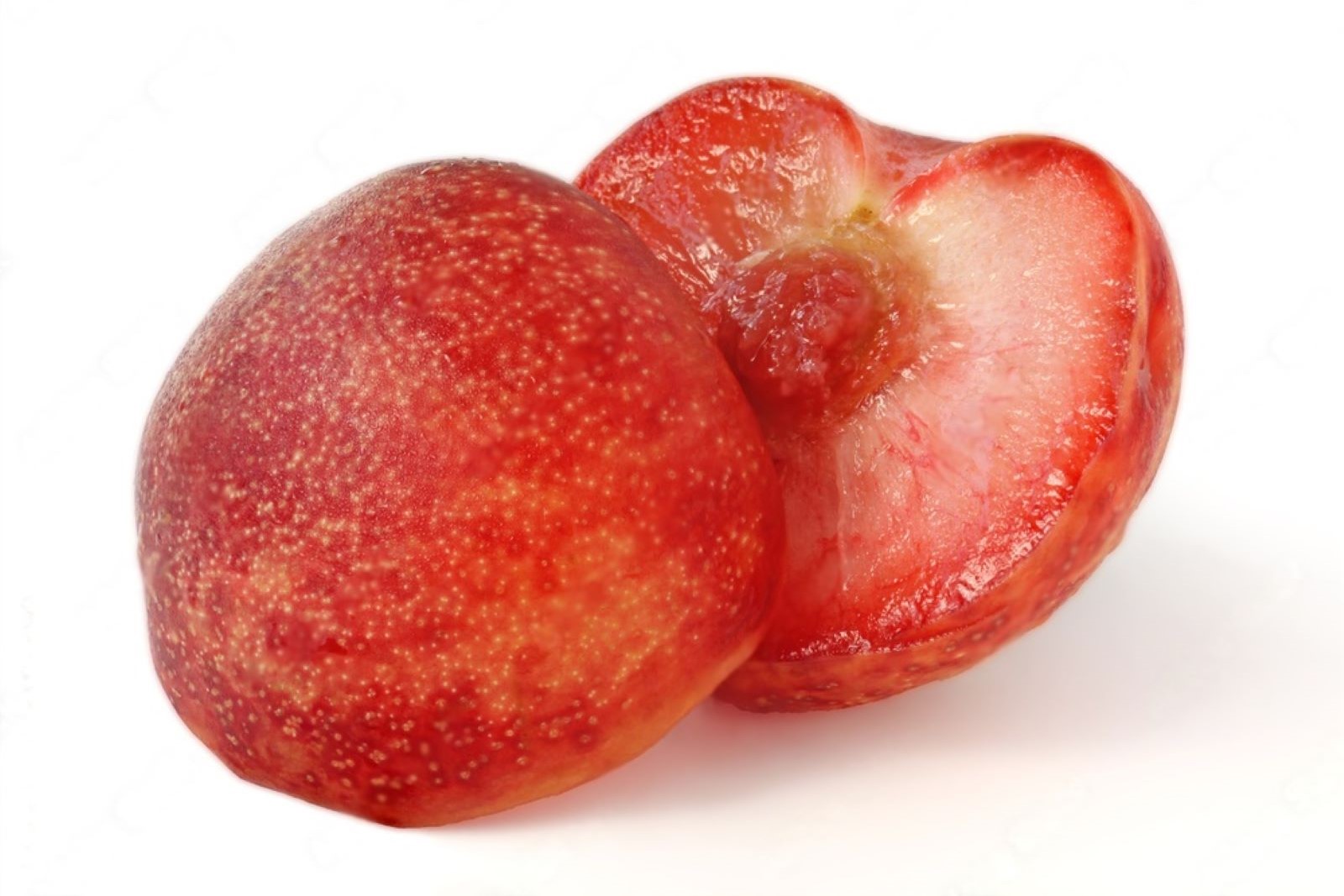
Pluots, also known as plumcots, are a delicious hybrid fruit that combines the best qualities of plums and apricots. With their juicy texture and sweet-tart flavor, pluots are a popular choice for enjoying fresh during their peak season. However, if you have an abundance of pluots or want to savor their taste all year round, freezing them is a great option. Freezing pluots not only preserves their flavor but also allows you to use them in various recipes, such as smoothies, pies, and jams. In this article, we will provide a step-by-step guide on how to freeze pluots while maintaining their quality and taste.
Here’s a guide on how to freeze pluots:
Step 1: Choose ripe pluots
When it comes to freezing pluots, selecting the right fruit is crucial to ensure optimal flavor and texture after freezing. Ripe pluots that are at their peak of sweetness and flavor will yield the best results.
To choose ripe pluots, look for fruits that are firm but slightly soft to the touch. They should give a little when gentle pressure is applied, indicating that they are fully ripe. Avoid pluots that are overripe or have blemishes, as they may have a mushy texture and may not freeze well.
The ripeness of pluots is important because freezing does not improve the quality of the fruit. Instead, it preserves the existing qualities, so starting with ripe pluots ensures that you freeze them at their best. Ripe pluots will have a higher sugar content and a more developed flavor, which will be maintained during the freezing process.
Choosing ripe pluots also helps ensure that they are at their peak nutritional value. Ripe fruits generally have higher levels of vitamins, minerals, and antioxidants compared to unripe ones. Freezing ripe pluots allows you to preserve these valuable nutrients for future consumption.
Can I freeze pluots that are already ripe, or should I wait until they’re slightly underripe?
It is possible to freeze pluots that are already ripe, but it’s generally recommended to freeze them when they are slightly under ripe for better results. Ripe pluots tend to be softer and have a higher water content, which can affect their texture when frozen and thawed. Freezing slightly under ripe pluots helps maintain their firmness and structure, resulting in better quality after thawing.
Step 2: Wash and pit the pluots
Properly washing and pitting pluots before freezing is an essential step to ensure cleanliness and remove any potential contaminants. Additionally, removing the pits allows for easier consumption and usage of the frozen pluots in various recipes.
To wash the pluots, start by holding them under cool, running water. Gently rub the surface of the fruit with your hands to remove any dirt or debris that may be present. This step is important as it helps eliminate any external contaminants that could affect the quality and taste of the frozen pluots.
After washing, it’s time to remove the pits. Cutting the pluots in half and extracting the pits makes it easier to handle and use the fruit once it’s frozen. To do this, use a sharp knife to make a clean cut around the pit, following the natural indentation of the fruit. Hold each half of the pluot firmly and gently twist them apart to separate them. Discard the pits, as they are not suitable for freezing and may affect the texture and taste of the fruit if left in.
Removing the pits is particularly important if you plan to use the frozen pluots in recipes that require the fruit to be sliced, diced, or pureed. It allows for a smoother and more convenient preparation process when you’re ready to use the frozen pluots later on.
Can I freeze pluots without any preparation?
Yes, you can freeze pluots without any preparation. Pluots can be placed directly in the freezer without needing to peel, slice, or add any additional ingredients. However, if you prefer a smoother texture or plan to use the frozen pluots in specific recipes, you may choose to peel and slice them before freezing. Ultimately, the decision depends on your personal preference and intended use for the frozen pluots.
Step 3: Slice or dice the pluots
Once you have washed and pitted the pluots, the next step is to determine how you want to freeze them. You can choose between slicing or dicing the pluots based on your preferences and the intended use of the frozen fruit.
Slicing the pluots into thin, uniform slices is an excellent option if you plan to use them as toppings for desserts, salads, or even as a decorative element in drinks. Slices allow for an attractive presentation and are convenient to handle when adding them to various dishes. When slicing, aim for consistent thickness to ensure even freezing and easy portioning when you eventually use the frozen pluots.
On the other hand, if you’re planning to use the pluots in recipes that require them to be cooked down or blended, such as making jams, sauces, or fruit purees, dicing the pluots is a better choice. Diced pieces are smaller and more suitable for recipes where the pluots will be broken down during the cooking process. Uniformly diced pluots freeze well and facilitate efficient cooking and blending when you’re ready to use them.
Whether you choose to slice or dice the pluots, the key is to ensure uniformity in size and shape. This uniformity allows the pluots to freeze evenly and helps maintain their texture and flavor throughout the freezing process. It also makes it easier to measure and use the desired quantity of frozen pluots in recipes later on.
Consider the intended use of the frozen pluots and your personal preferences when deciding whether to slice or dice them. This step allows you to customize the frozen pluots to suit your specific needs, making it more convenient to incorporate them into your favorite recipes in the future.
Step 4: Prepare a syrup (optional)
When freezing pluots, you have the option to prepare a simple syrup to help maintain their texture and prevent freezer burn. While this step is optional, it can be beneficial in preserving the quality of the frozen pluots.
To prepare the syrup, you’ll need equal parts of sugar and water. In a saucepan, combine the sugar and water, and heat the mixture over medium heat. Stir occasionally until the sugar completely dissolves in the water. The heat helps to facilitate the dissolution process. Once the sugar has dissolved, remove the saucepan from the heat and let the syrup cool completely before using it.
Using a syrup when packing pluots for freezing helps to prevent the formation of ice crystals, which can lead to freezer burn. Freezer burn occurs when moisture in the fruit evaporates and causes the texture to become dry and leathery. The syrup acts as a protective layer around the pluots, keeping them moist and preserving their natural juiciness.
The sugar in the syrup also contributes to maintaining the pluots’ flavor. It enhances their natural sweetness, ensuring that the frozen pluots retain their delicious taste even after being stored in the freezer.
However, it’s important to note that using a syrup is optional. If you prefer not to use one, you can still freeze pluots without it. The pluots will still freeze, but there may be a slightly higher risk of freezer burn and a potential loss of texture and flavor over time.
Consider preparing a syrup when packing pluots for freezing, especially if you want to maximize the quality and taste of the frozen fruit. It provides an extra layer of protection and helps maintain the pluots’ texture and flavor, ensuring a more enjoyable experience when you’re ready to use them later on.
Step 5: Pack the pluots
After slicing or dicing the pluots and, optionally, preparing a syrup, it’s time to pack the pluots for freezing. Proper packing ensures that the pluots remain protected, maintain their quality, and prevent freezer burn.
Start by selecting freezer-safe containers or resealable plastic bags specifically designed for freezing. These containers or bags are durable and resistant to low temperatures, preventing any unwanted odors or flavors from seeping into the pluots.
If you prepared a syrup in the previous step, pour it over the sliced or diced pluots before packing. The syrup adds moisture and acts as a protective layer. Ensure that you leave some headspace at the top of the container or bag to allow for expansion during freezing. Pluots contain water, which expands as it freezes, and leaving room prevents containers or bags from bursting.
When packing, remove as much air as possible from the containers or bags before sealing them. Air exposure can cause freezer burn, leading to texture and flavor deterioration. To remove air, press down gently on the containers or bags as you seal them, or use a vacuum sealer for an airtight seal.
If you didn’t use a syrup, you can still pack the pluots without it. Simply place the sliced or diced pluots into the containers or bags, leaving some headspace for expansion, and seal them tightly.
Proper packing is essential for maintaining the quality of the frozen pluots. It helps prevent the growth of ice crystals, maintain the fruit’s texture and flavor, and protect it from freezer burn. When you’re ready to use the frozen pluots, well-packed containers or bags make it easier to retrieve the desired amount without unnecessary thawing or refreezing.
Step 6: Label and date the packages
Once you have packed the pluots for freezing, it’s important to label and date each package. This simple step is crucial for organization and ensuring that you use the pluots within a reasonable timeframe.
Using a marker or adhesive labels, clearly write the current date on each container or bag. This allows you to keep track of how long the pluots have been in the freezer. It’s important to note that frozen pluots are best consumed within a certain timeframe to maintain their quality and flavor.
Additionally, it’s helpful to indicate the contents of each package. This information will make it easier for you to identify the pluots and plan your recipes accordingly when you’re ready to use them. Knowing what’s inside each package eliminates the need to defrost multiple containers or bags to find the specific fruits you’re looking for.
Placing the labeled packages in the freezer ensures they are stored properly and remain accessible. It’s a good practice to organize the packages in a way that allows for easy retrieval and minimizes the chances of them getting lost or forgotten.
By labeling and dating the packages, you have a clear record of the freezing time and contents of each package. This information helps you manage your frozen pluots effectively and make the most out of their freshness and flavor when incorporating them into your favorite recipes.
Remember to consume the frozen pluots within a reasonable timeframe for optimal taste and texture. While pluots can be stored in the freezer for several months, it’s generally recommended to use them within six to eight months to ensure the best quality. Keeping track of the freezing date allows you to prioritize using older batches first and avoid unnecessary waste.
Step 7: Freeze the pluots
After labeling and dating the packages, it’s time to transfer the packed pluots to the freezer for the freezing process. Proper freezing ensures the preservation of their texture, flavor, and overall quality.
When placing the packages in the freezer, try to arrange them in a single layer if possible. This allows for quicker freezing and ensures that each pluot piece freezes evenly. If you have limited space, you can stack the packages, but make sure to leave some space between them for air circulation.
It’s important to keep the pluots away from other strong-smelling foods in the freezer. Pluots can absorb odors easily, which may affect their taste and overall enjoyment. Keeping them separate helps maintain the natural and delicate flavor of the pluots.
The freezing time for pluots is typically around 4 to 6 hours, but this can vary depending on the temperature and airflow in your freezer. The pluots should be left undisturbed in the freezer until they are completely frozen. This ensures that the fruit retains its texture and flavor during the freezing process.
By freezing the pluots in a timely manner and allowing them to freeze completely, you preserve their natural sweetness, juiciness, and nutritional value. This step is crucial in maintaining the quality of the fruit, allowing you to enjoy the taste of pluots long after their peak season.
Remember that freezing pluots at their peak freshness and quality is key to obtaining the best results. Properly frozen pluots can be used in various recipes, such as smoothies, pies, jams, or enjoyed as a refreshing frozen treat on their own.
Step 8: Store the frozen pluots
After the pluots have fully frozen, it’s time to store them in a way that maximizes space and ensures their long-term quality. Proper storage helps prevent damage and maintains the integrity of the frozen pluots.
When arranging the frozen pluots in the freezer, you can rearrange them to optimize space. Neatly stack the containers or bags, ensuring that they are stable and won’t topple over. Alternatively, you can place them in an organized manner, side by side, to utilize the available freezer space efficiently. By organizing the frozen pluots, you can easily access them when needed without causing any unnecessary disturbance to other items in the freezer.
It’s important to keep the pluots in a section of the freezer where the temperature remains constant. Fluctuating temperatures can affect the quality and texture of the fruit. Avoid placing them near the freezer door or in areas where warm air may enter frequently. Ideally, store them in the back or in a dedicated freezer drawer where the temperature is consistently cold.
By ensuring a stable and consistent temperature, you help maintain the frozen pluots’ texture, flavor, and nutritional value. Consistent freezing temperatures prevent the formation of ice crystals and freezer burn, ensuring the pluots retain their quality throughout their storage period.
Proper storage also helps protect the frozen pluots from physical damage. Be mindful of not placing heavy objects on top of the containers or bags to prevent crushing. Treat the frozen pluots with care to preserve their shape and structure.
Additionally, consider keeping the frozen pluots separate from strong-smelling foods in the freezer. This helps maintain the pluots’ natural flavor and prevents any unwanted flavor transfer.
By following these storage practices, you ensure that the frozen pluots remain in excellent condition and are readily available for your culinary creations whenever you need them. Properly stored frozen pluots can last for several months, allowing you to enjoy the taste of pluots even when they are out of season.
Remember to check the storage guidelines for frozen pluots, as different varieties and freezing methods may have specific recommendations. Following these guidelines will help you make the most of your frozen pluots and enjoy their delightful flavor throughout their storage period.
How long can I keep frozen pluots in the freezer?
Frozen pluots can be stored in the freezer for up to 12 months. However, for the best quality, it is recommended to consume them within 6 to 9 months. Properly sealed and stored pluots will maintain their flavor and texture during this period. After 12 months, the pluots may still be safe to eat, but their quality and taste may begin to deteriorate. It is a good practice to label the packaging with the date of freezing to keep track of the storage time.
Other related questions
How do I defrost frozen pluots properly for best texture and taste?
To defrost frozen pluots for the best texture and taste, it is recommended to transfer them from the freezer to the refrigerator. Allow the pluots to thaw slowly in the refrigerator overnight or for several hours. This gradual thawing process helps to preserve the pluots’ natural juiciness and prevents them from becoming mushy. Once thawed, you can enjoy the pluots as is or use them in various recipes. Avoid using heat or microwave defrosting methods, as they can negatively affect the texture and flavor of the fruit.
Can I refreeze previously thawed pluots?
It is generally not recommended to refreeze previously thawed pluots. Freezing and thawing can affect the texture and taste of the fruit, and repeated freezing and thawing can further degrade their quality. When pluots are thawed, the ice crystals melt and can cause moisture loss and make the fruit mushy. If you have thawed pluots that you don’t plan to consume immediately, it is best to store them in the refrigerator and use them within a few days rather than refreezing them.
How do I know if my frozen pluots have gone bad?
There are a few signs to look for to determine if your frozen pluots have gone bad. Firstly, check for any signs of freezer burn, such as discoloration or dry, shriveled patches on the fruit. Secondly, if the pluots have developed an off-putting odor or taste, it is an indication that they may have spoiled. Lastly, if you notice any mold or unusual growth on the fruit, it’s a clear sign that the pluots have gone bad and should not be consumed. When in doubt, it’s better to err on the side of caution and discard any frozen pluots that show signs of spoilage.
Can I use frozen pluots with the fresh ones?
Yes, you can use frozen pluots alongside fresh ones in certain recipes or preparations. Frozen pluots can be a convenient addition to smoothies, sauces, jams, or baked goods when combined with fresh pluots. However, keep in mind that the texture of the frozen pluots will be softer and slightly different from the fresh ones. Adjusting the cooking time or incorporating the frozen pluots in a way that complements their texture can help ensure a harmonious combination with the fresh fruit.
Can I freeze pluots that have been mixed with other fruits, like berries or peaches?
Yes, you can freeze pluots that have been mixed with other fruits like berries or peaches. Combining different fruits for freezing can be a convenient way to create flavorful fruit mixes or blends. Just ensure that all the fruits are prepared and cut to the appropriate size for freezing, and package them together in airtight containers or freezer bags to prevent cross-contamination and maintain their individual flavors.
Should I add any sweeteners or preservatives before freezing pluots?
Adding sweeteners or preservatives before freezing pluots is not necessary, but it can be done based on personal preference or specific recipe requirements. Pluots naturally have a sweet flavor, so additional sweeteners may not be needed. As for preservatives, freezing itself acts as a preservative, so there is no requirement to add any additional preservatives unless desired for a particular purpose or recipe.
Can I freeze pluots that have been cooked or processed into sauces or jams?
Yes, you can freeze pluots that have been cooked or processed into sauces or jams. It is a convenient way to preserve the flavors and textures of the prepared pluots for future use. Allow the cooked or processed pluots to cool completely before transferring them to airtight containers or freezer-safe jars, leaving some headspace for expansion during freezing.

